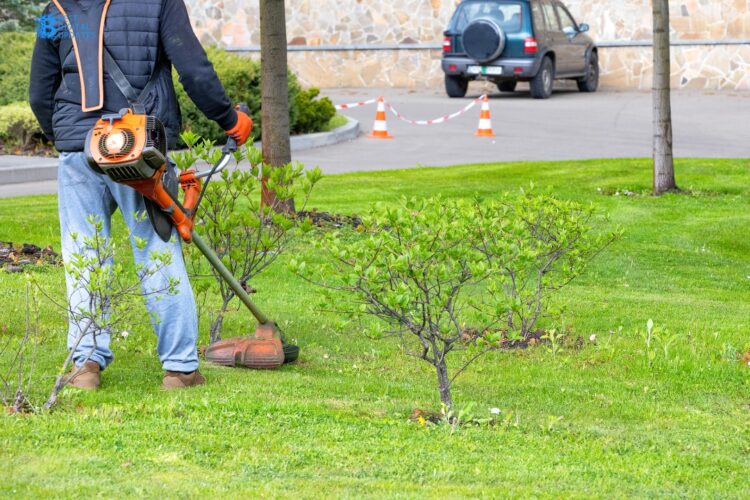Weeds can be a gardener’s nightmare, popping up uninvited and threatening to take over your carefully maintained space. Whether you’re dealing with a full-blown invasion or just a few stubborn sprouts, clearing weeds doesn’t have to be a back-breaking chore. With the right tools, techniques, and a little strategy, you can keep your garden looking pristine and weed-free.
Equip Yourself With a Battery-Powered Weed Eater
Table of Contents
When it comes to cutting weeds with ease, a battery powered weed eater is your best friend. Unlike bulky gas-powered models, these are lightweight, quiet, and easy to maneuver. Forget about cords getting tangled or the hassle of fueling up—battery-powered weed eaters give you the freedom to work anywhere in your yard. Look for one with a long battery life and adjustable speeds, so you can handle everything from delicate trimming to thicker, tougher weeds. Many modern options also have interchangeable batteries, meaning you can keep a spare charged up to avoid downtime.
Mulch: Your Garden’s Shield
Mulching is like giving your garden a protective blanket. A thick layer of mulch—whether it’s wood chips, straw, or even grass clippings—helps block sunlight, which weeds need to grow. It also retains moisture for your plants, meaning less watering for you. Spread about two to three inches of mulch around your plants and along pathways to smother any weeds trying to sprout. Over time, the mulch will break down, improving your soil’s health while keeping pesky weeds at bay.
Pull Smart, Not Hard
Weeding by hand might sound old-fashioned, but when done right, it’s surprisingly effective. The key is to work smarter, not harder. Tackle weeds after a rainfall or water the area beforehand; the moist soil will make it much easier to pull weeds out, roots and all. For stubborn weeds, a simple hand weeder or a dandelion fork can make quick work of them without putting unnecessary strain on your hands or back. To save time, focus on younger weeds—don’t let them mature and spread seeds.
Use Weed Barriers for Long-Term Prevention
Weed barriers are a great option if you’re looking to reduce your weeding workload over the long haul. These are physical layers, like landscape fabric or plastic sheeting, placed over the soil to block weeds from growing. Simply cut holes where your plants are, and cover the barrier with mulch for a polished, natural look. Keep in mind that weed barriers are best suited for areas like garden beds or under gravel pathways, where you want to minimize maintenance.
Embrace the Power of Vinegar
Sometimes, all it takes to keep weeds in check is a household staple—vinegar. Its natural acidity can kill weeds when applied directly to their leaves. Use a spray bottle to target the weeds you want to eliminate, but be careful to avoid your desirable plants since vinegar doesn’t discriminate. For best results, apply it on a sunny day when there’s no rain in the forecast. This method works best on younger weeds or those growing in cracks and hard-to-reach places.
Maintain a Healthy Lawn
A healthy lawn is one of the best defenses against weeds. Thick, well-maintained grass crowds out weeds and makes it harder for them to take hold. Regular mowing, proper watering, and fertilizing are key to keeping your lawn in tip-top shape. Make sure not to cut the grass too short, as taller blades can provide shade that prevents weed seeds from germinating. Overseeding your lawn each season can also help fill in any bare patches that might invite weeds to settle in.
Stay Consistent
Weeding isn’t a one-and-done task—it requires consistency. The good news is that a little effort now can save you a lot of trouble later. Set aside time each week to do a quick weed check. It doesn’t have to take long; even ten minutes can make a difference. By staying on top of the problem, you can prevent weeds from becoming a bigger issue and keep your garden looking its best.
The Role of Edging
Adding a physical edge to your garden beds not only gives your yard a neat and polished appearance but also helps keep weeds in check. Materials like bricks, metal, or plastic edging create a barrier that prevents grass and weeds from creeping into your flower beds or vegetable garden. Install the edging deep enough so that roots can’t sneak underneath, and pair it with regular maintenance to keep everything tidy.
Know Your Weeds
Understanding what you’re dealing with can save you a lot of frustration. Different weeds require different approaches, so identifying them is half the battle. For example:
- Annual weeds– These sprout, grow, and die within a single season, often spreading seeds quickly. Pull these early to stop them in their tracks.
- Perennial weeds– These come back year after year if not dealt with properly. Digging out the entire root system is crucial for long-term control.
- Grassy weeds– These can blend into your lawn but compete for nutrients. Regular mowing and proper lawn care can keep them at bay.
A quick online search or gardening app can help you identify and target specific weeds in your area.
Keep Tools Clean and Ready
Your tools are your allies in the fight against weeds, so take good care of them. Clean blades and edges after each use to prevent the spread of weed seeds or diseases. Sharpen tools regularly to make your job easier and more efficient. And don’t underestimate the value of gloves—they protect your hands from blisters and make it less daunting to tackle prickly or irritating weeds.
Wrap-Up: A Weed-Free Garden Is Within Reach
Weeds might be a fact of life, but managing them doesn’t have to be exhausting. By equipping yourself with the right tools, like a battery-powered weed eater, and using effective strategies like mulching, weed barriers, and consistent maintenance, you can keep your garden looking its best with minimal effort. Small, regular actions can make all the difference, transforming your outdoor space into a place of pride and relaxation. With these tips in your gardening toolkit, tackling weeds is simpler than ever.




















